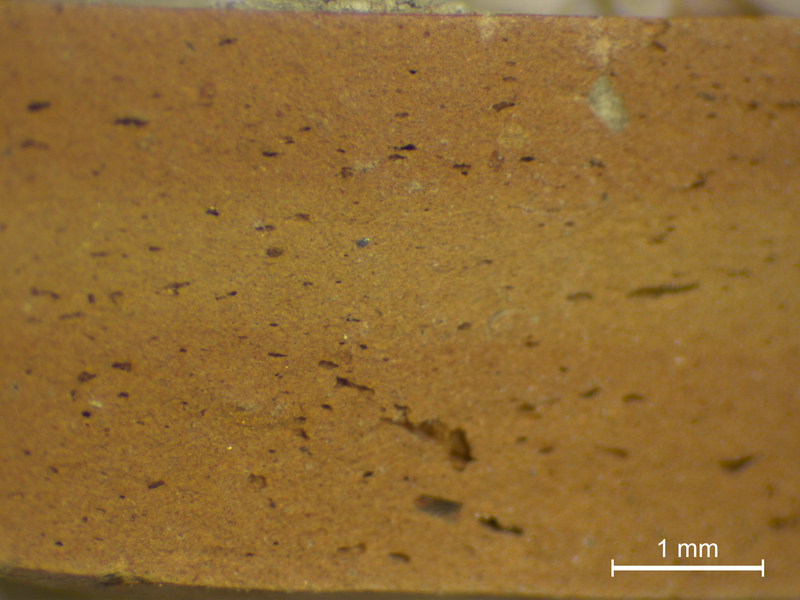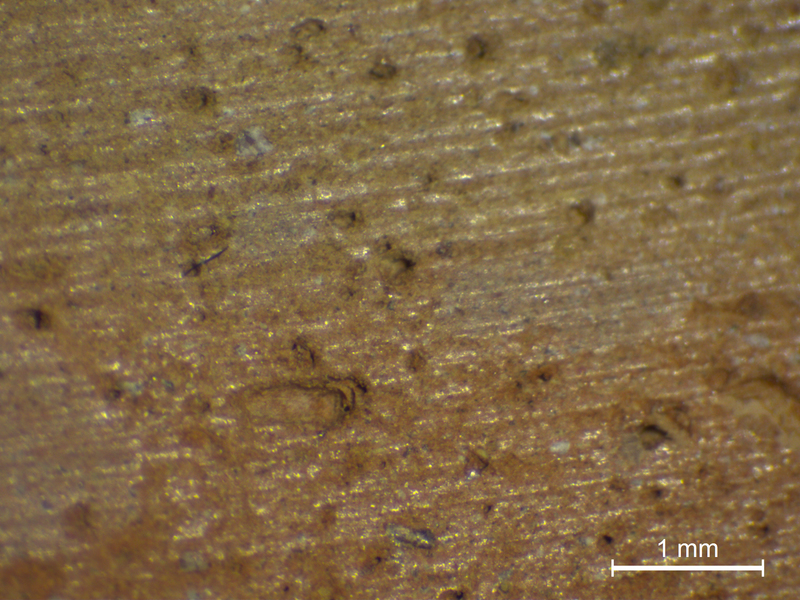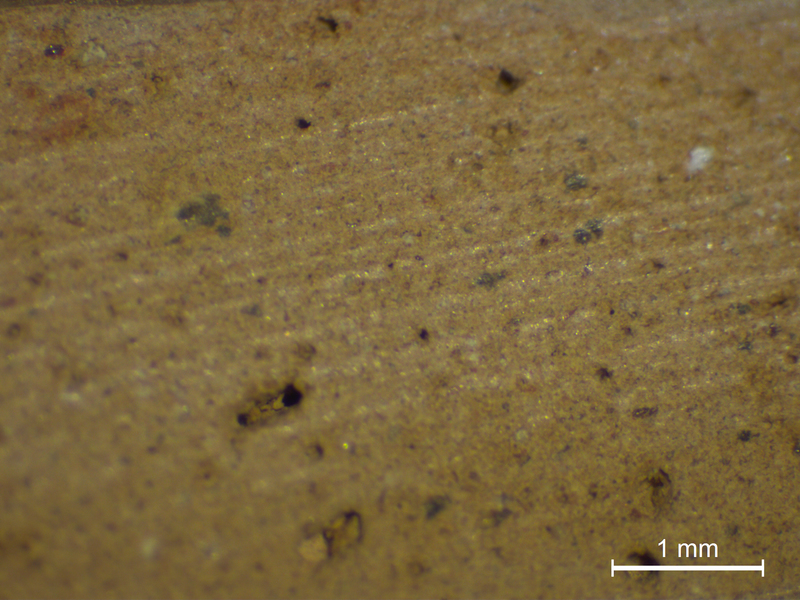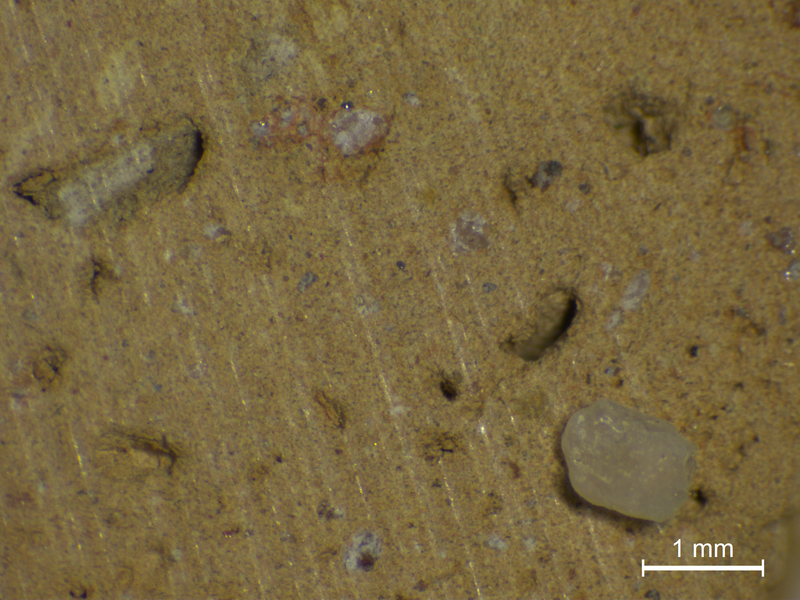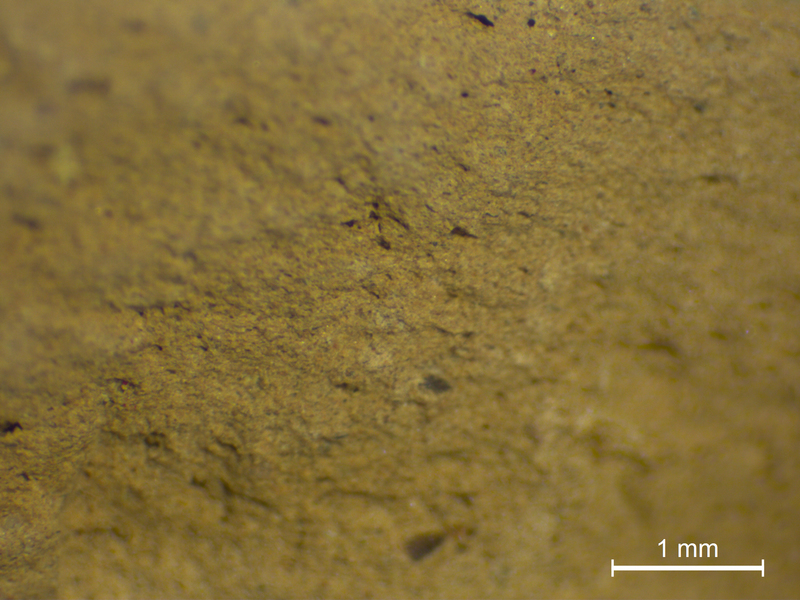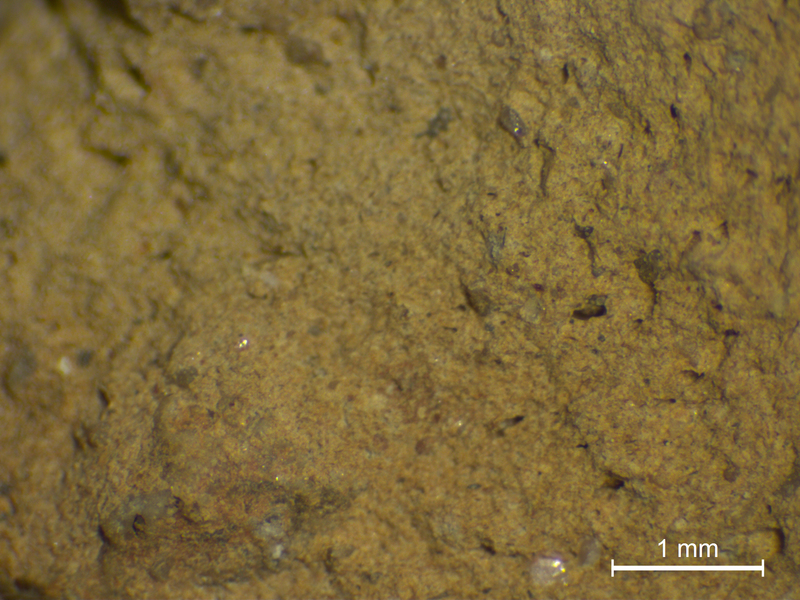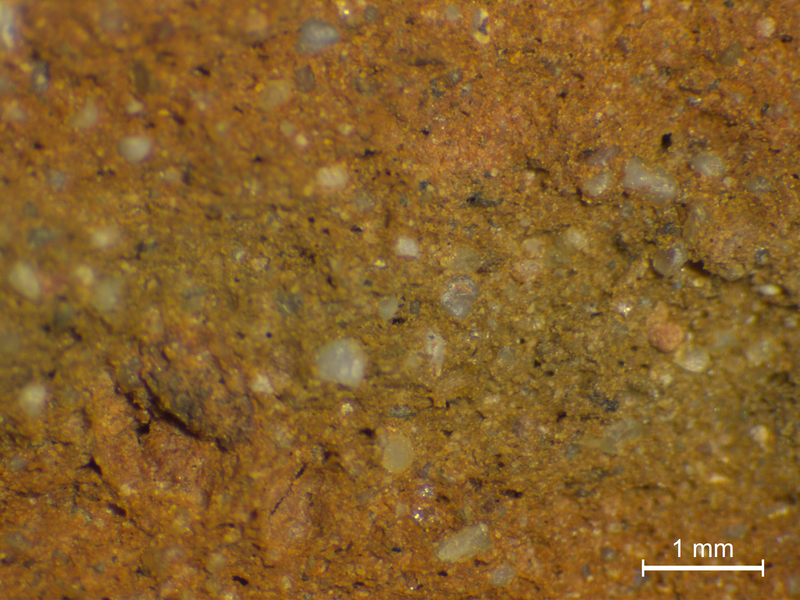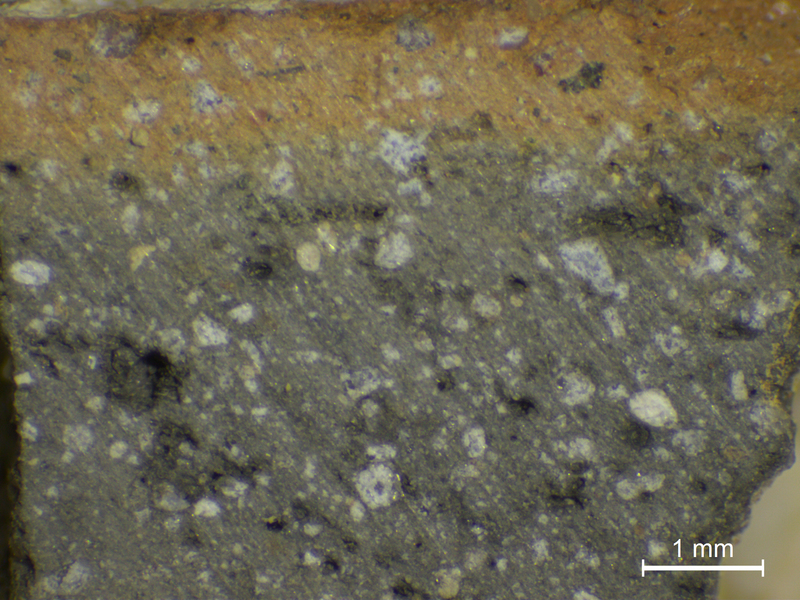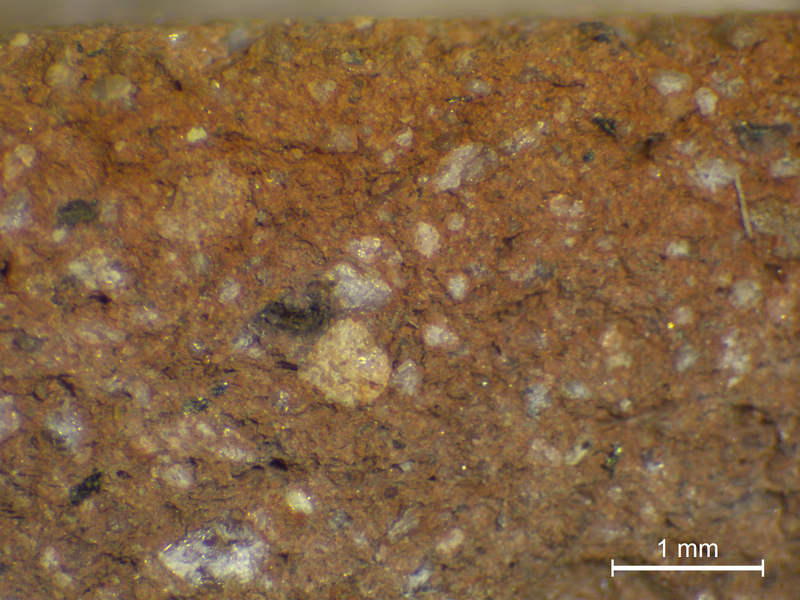Fabric
Fabric is the term archaeological scientists use synonymously with 'paste'. Analyses of the pottery fabrics allow researchers to identify the paste recipe potters use to create their pottery. Fabric analysis is done by investigating the two basic components of the paste. These are the matrix that is composed of clay minerals less than 0.02mm across, and the inclusions that are larger than the clay minerals.
Particular combinations of these two components are referred to as 'paste recipes'. Paste recipes mainly depend on the choice of raw materials used by the potters and on the choice of preparation techniques. Both of these components are modified by the firing conditions when the pottery is fired.
Questions to think about,
Can you observe the difference between the fabrics? Do you think there would be any difference in the fabrics if the potters had used the same raw materials?
